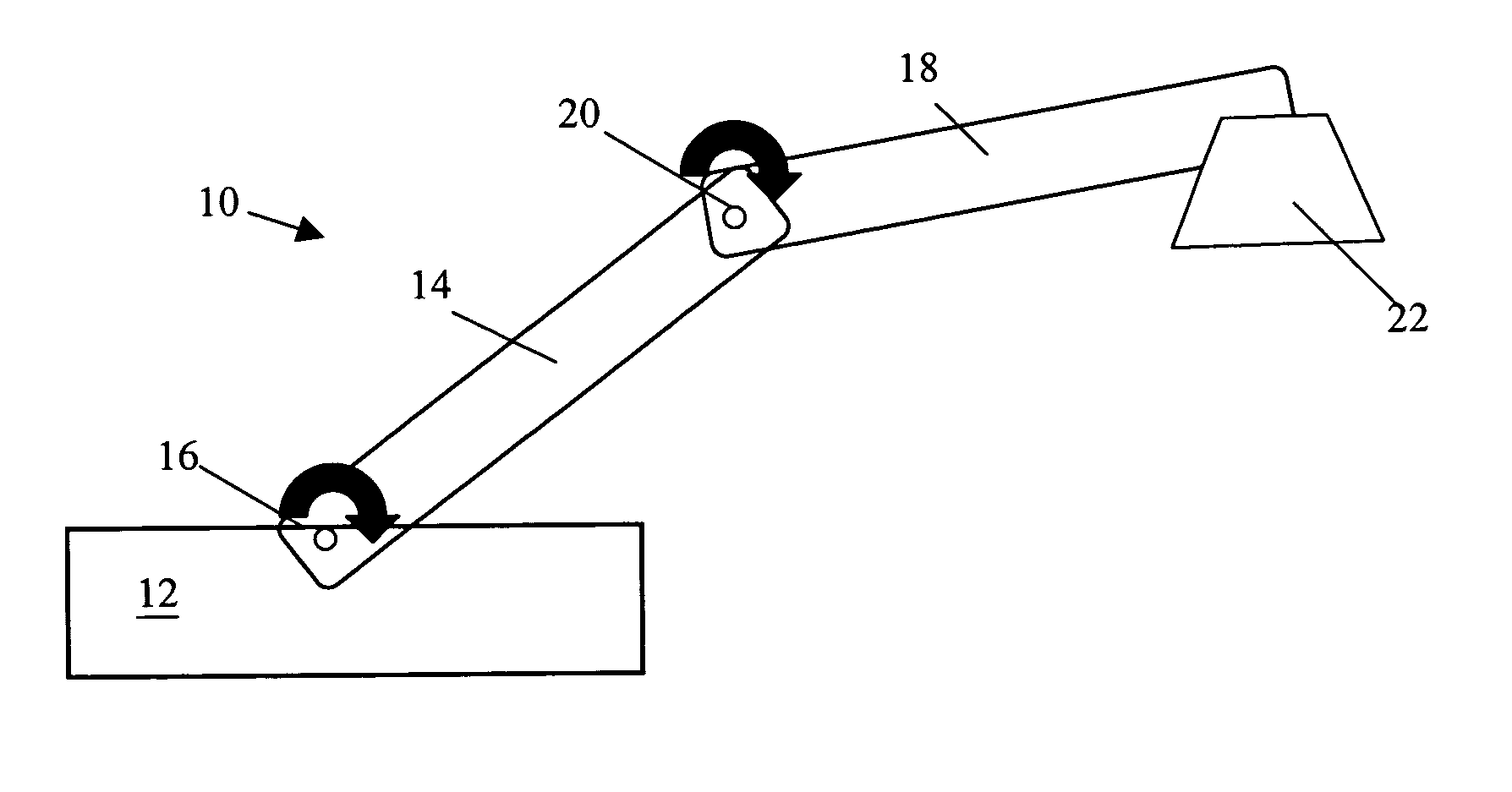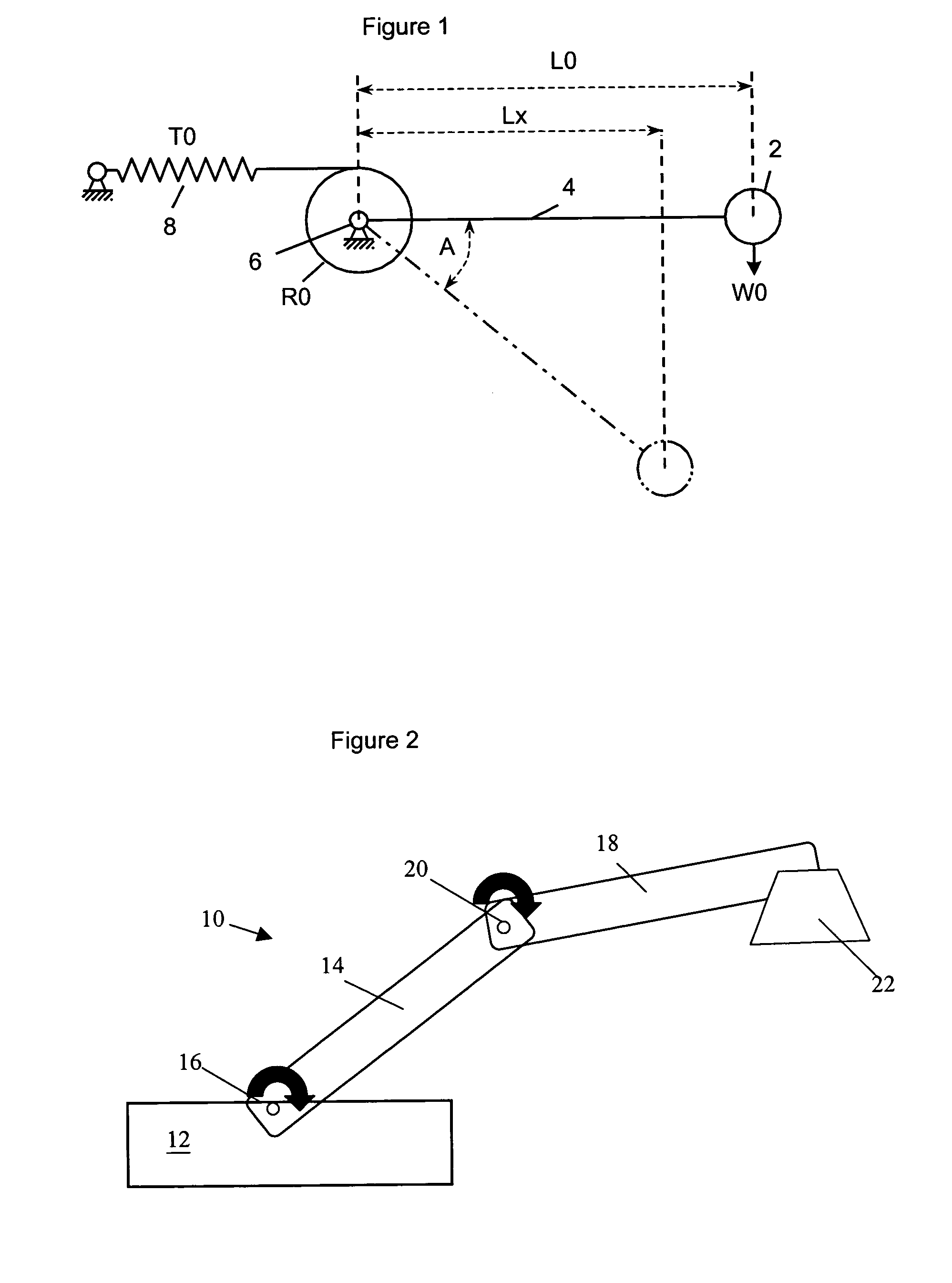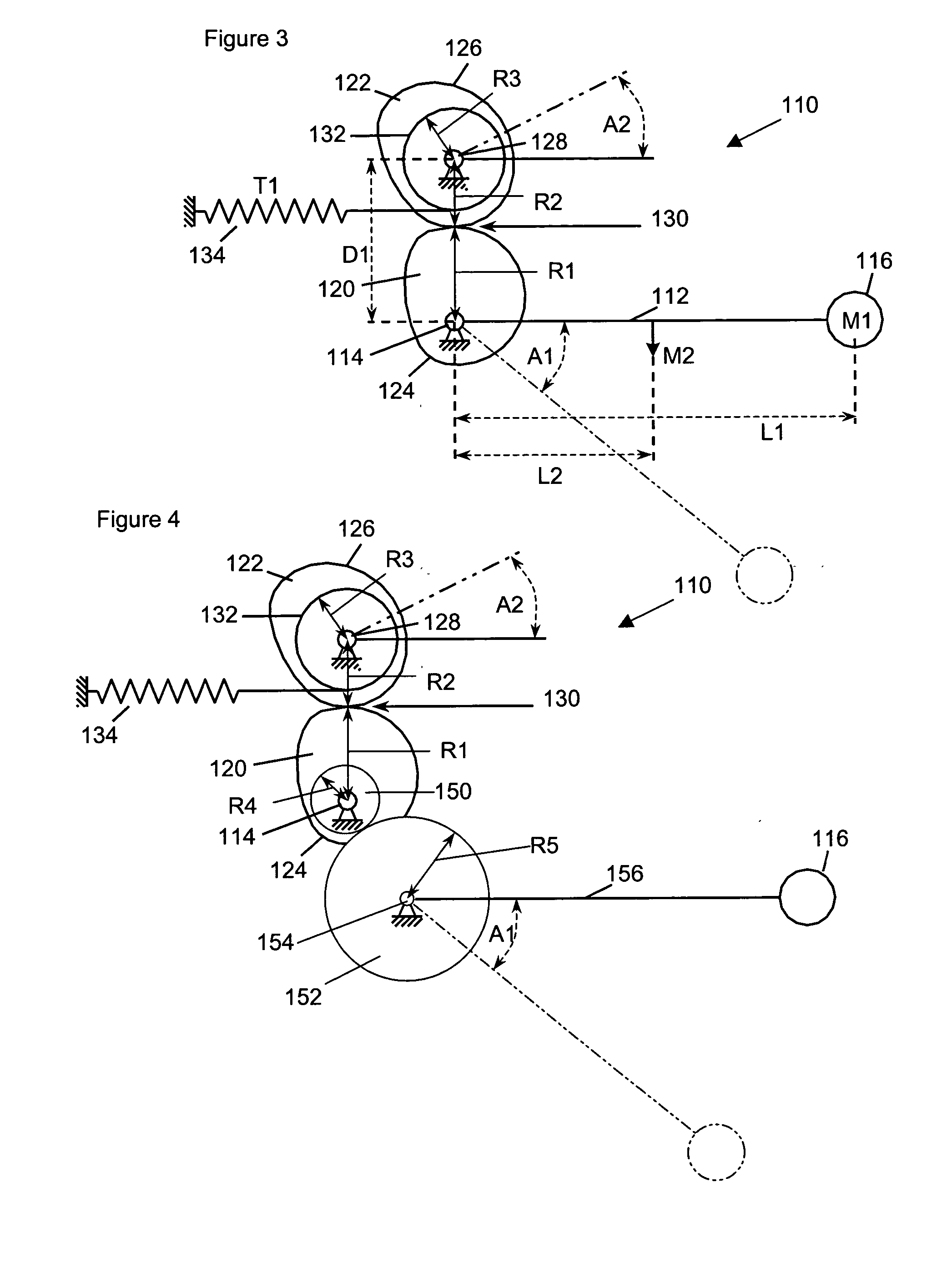Passive gravity-compensating mechanisms
a gravity compensating mechanism and arm technology, applied in the direction of mechanical control devices, controlling members, building scaffolds, etc., can solve the problems of additional effort or energy, drooping arms, and at least double the space used, or at least add a mass
- Summary
- Abstract
- Description
- Claims
- Application Information
AI Technical Summary
Benefits of technology
Problems solved by technology
Method used
Image
Examples
first embodiment
FIG. 3 shows a gravity compensated system 110 according to the invention.
A single arm 112 is mounted to rotate about a pivot point 114. The arm 112 has a length L1 with a mass M1 at its end 116. It also has its own mass M2, acting through its center of mass 118, at a distance L2 along the length of the arm 112. Assuming the arm is at an angle A1 to the horizontal, the moment about the pivot point 114, due to the arm 112 is:
([M1*L1]+[M2*L2])*g*Cos A1,
where “g” is the acceleration due to gravity.
The system 110 also includes two cam bodies 120, 122, with non-circular profiles in the form of non-circular outer surfaces 124, 126. A first cam body 120 rotates about the same pivot point 114 with the arm 112. The second cam body 122 rotates about a second pivot point 128. The non-circular outer surfaces 124, 126 remain in contact with each other, at a changing point of contact 130 (which always lies on a line directly between the first and second pivot points) and rotate with each oth...
PUM
 Login to View More
Login to View More Abstract
Description
Claims
Application Information
 Login to View More
Login to View More - R&D
- Intellectual Property
- Life Sciences
- Materials
- Tech Scout
- Unparalleled Data Quality
- Higher Quality Content
- 60% Fewer Hallucinations
Browse by: Latest US Patents, China's latest patents, Technical Efficacy Thesaurus, Application Domain, Technology Topic, Popular Technical Reports.
© 2025 PatSnap. All rights reserved.Legal|Privacy policy|Modern Slavery Act Transparency Statement|Sitemap|About US| Contact US: help@patsnap.com



